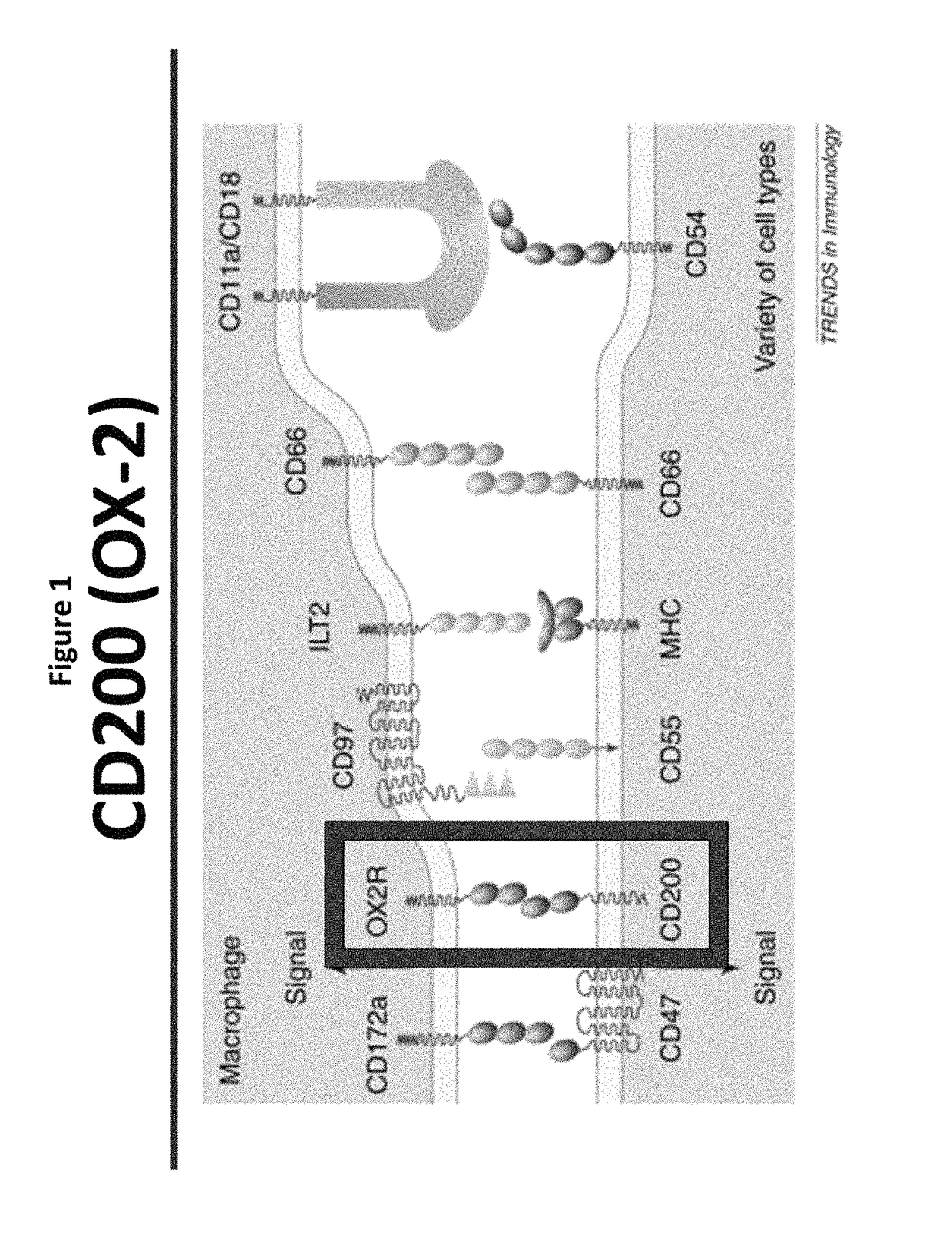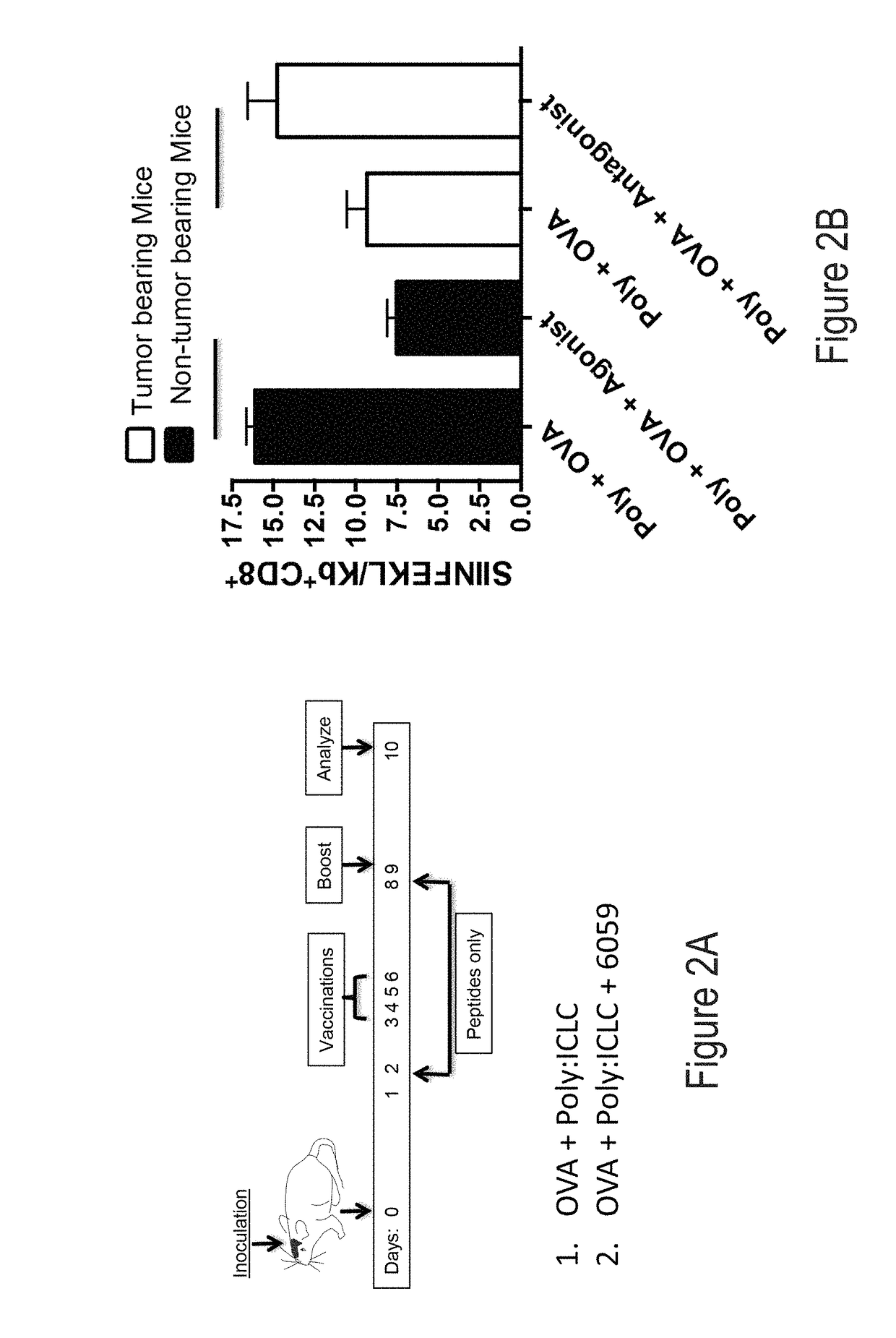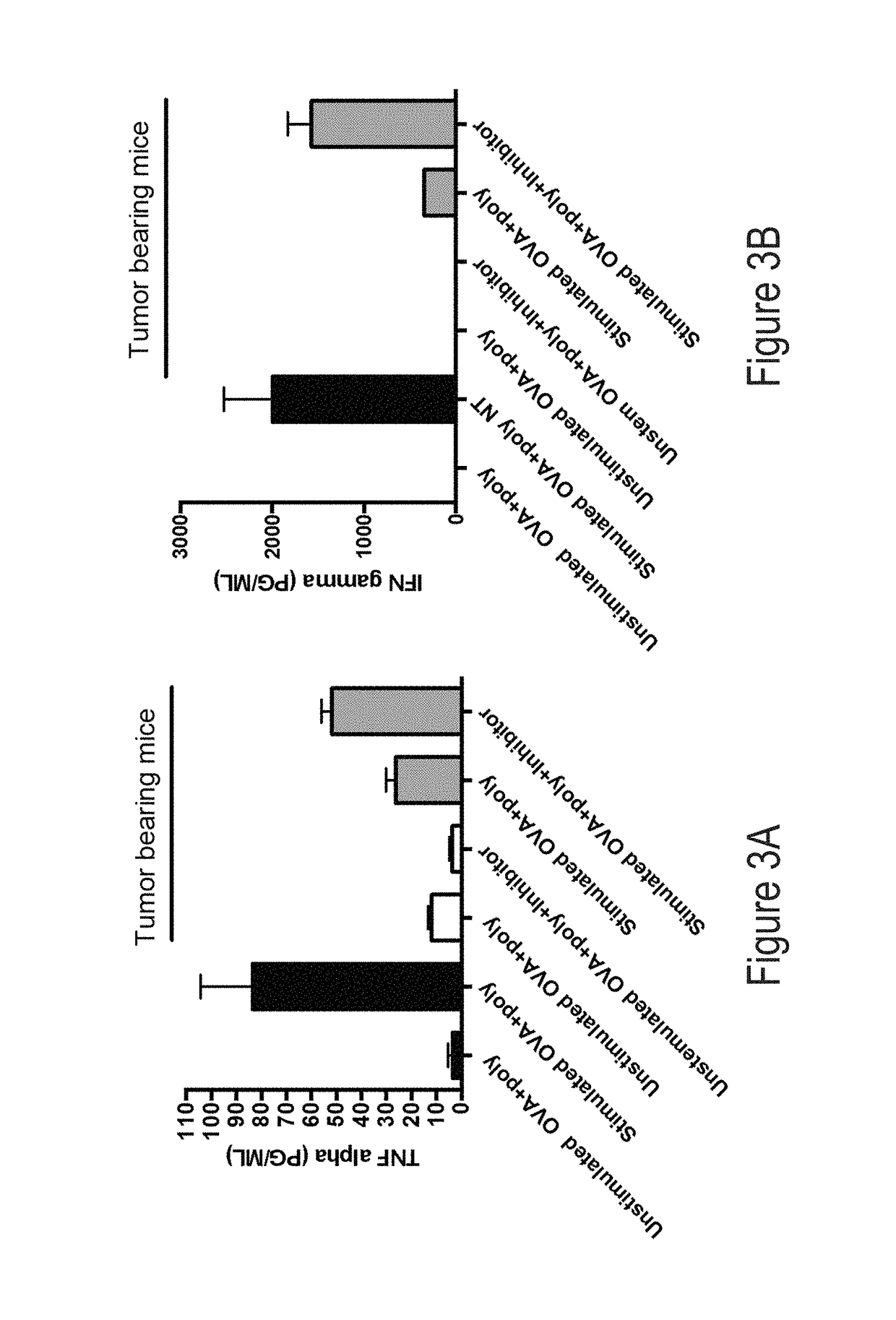CD200 inhibitors and methods of use thereof
a technology of cd200 and inhibitors, applied in the field of cd200 inhibitors, can solve the problems of insufficient treatment of many cancers and deficient adaptive immune responses, and achieve the effect of enhancing the efficacy of a cancer vaccin
- Summary
- Abstract
- Description
- Claims
- Application Information
AI Technical Summary
Benefits of technology
Problems solved by technology
Method used
Image
Examples
example 1
Determination of how Select Inhibitors Reverse CD200-Induced Immune Suppression in Sentinel Lymph Nodes
[0280]Tumor-associated microenvironments and the sentinel lymph nodes exist under immunosuppressive conditions that inhibit the ability of the immune system to eliminate cancer cells and prevent reoccurrence. While researchers have generated signaling pathway inhibitors to overcome immunosuppressive cascades in either cancer or immune cells, or both, little efficacy has been achieved. CD200 is an immunosuppressive protein that negatively regulates immune cells bearing the CD200R. Recently, it has been reported that CD200 contains domains that act as competitive inhibitors modulating / reversing the suppressive properties of the protein.
[0281]As described herein, the ability of these inhibitors to modulate / reverse the suppressive properties of the tumor microenvironment has been demonstrated. Described herein are studies designed to: i) optimize the inhibitors, ii) evaluate CD200 / CD20...
example 2
Overcoming the Immunosuppressive Effects of the Tumor Microenvironment within the Central Nervous System
[0297]Even if the inhibitors are used to prime a T cell response in lymph nodes, the activated T cells encounter an immunosuppressive tumor microenvironment. To alleviate this hurdle, suppression of the tumor effects in the microenvironment is sought.
[0298]Patients with glioblastoma exhibit systemic immune suppression effecting resulting in deficient adaptive immune responses. These deficiencies are due to the enriched immunosuppressive factors secreted by the tumor suppressing T cell proliferation and cytotoxic function. Immunosuppression plays an important role in tumor progression in patients with glioblastoma. Reversing immune suppression to provide an effective immune targeting allows patients with glioma to have less tumor progression and improved outcomes.
[0299]It has been found that the inhibitors can reverse or modulate the immunosuppressive tumor microenvironment. Tumor-...
example 3
REFERENCES
[0356]1. Kong S, Sengupta S, Tyler B, et al. Suppression of human glioma xenografts with second-generation IL13R-specific chimeric antigen receptor-modified T cells. Clin Cancer Res 2012; 18(21): 5949-60.
[0357]2. Strupp R, Mason W, van den Bent M, et al. Radiotherapy plus concomitant and adjuvant temozolomide for glioblastoma. N Engl J Med 2005; 352: 987-96.
[0358]3. Stupp R, Hegi M E, Mason W P, et al. Effects of radiotherapy with concomitant and adjuvant temozolomide versus radiotherapy alone on survival in glioblastoma in a randomised phase III study: 5-year analysis of the EORTC-NCIC trial. Lancet Oncol 2009; 10(5): 459-66.
[0359]4. Schroeder K, Hoeman C, Becher O. Children are not just little adults: recent advances in understanding of diffuse intrinsic pontine glioma biology. Pediatric Research 2013; 75: 205-09.
[0360]5. Prins R M, Soto H, Konkankit V, et al. Gene expression profile correlates with T-cell infiltration and relative survival in glioblastoma patients vacci...
PUM
| Property | Measurement | Unit |
|---|---|---|
| length | aaaaa | aaaaa |
| Tm | aaaaa | aaaaa |
| temperatures | aaaaa | aaaaa |
Abstract
Description
Claims
Application Information
 Login to View More
Login to View More - R&D
- Intellectual Property
- Life Sciences
- Materials
- Tech Scout
- Unparalleled Data Quality
- Higher Quality Content
- 60% Fewer Hallucinations
Browse by: Latest US Patents, China's latest patents, Technical Efficacy Thesaurus, Application Domain, Technology Topic, Popular Technical Reports.
© 2025 PatSnap. All rights reserved.Legal|Privacy policy|Modern Slavery Act Transparency Statement|Sitemap|About US| Contact US: help@patsnap.com



